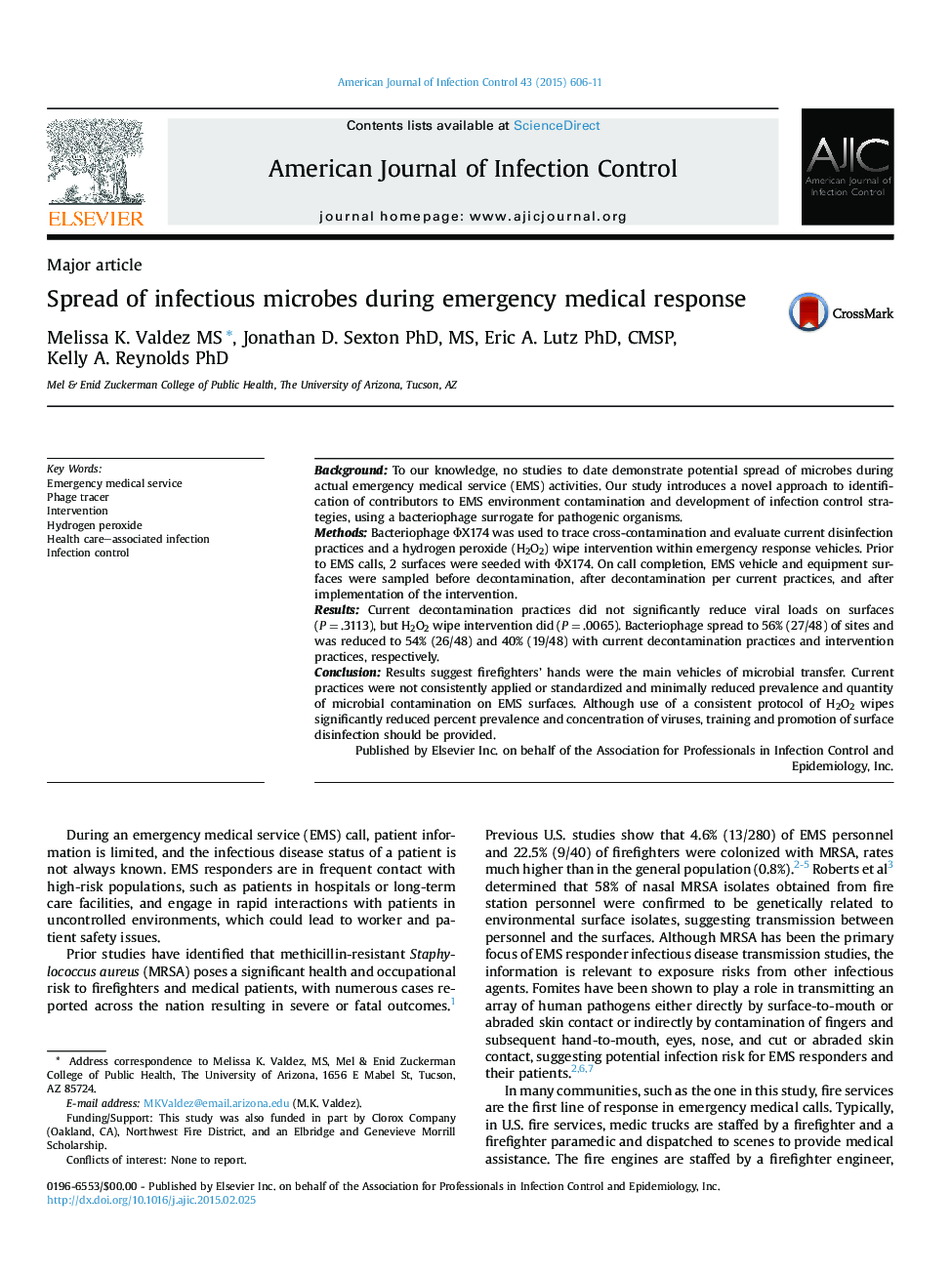| کد مقاله | کد نشریه | سال انتشار | مقاله انگلیسی | نسخه تمام متن |
|---|---|---|---|---|
| 5866677 | 1563471 | 2015 | 6 صفحه PDF | دانلود رایگان |
- We use bacteriophage as a human pathogen surrogate to trace surface transfer during emergency medical service calls.
- We quantify efficacy of current decontamination practice and hydrogen peroxide wipe intervention.
- Cross-contamination of emergency vehicle sites in 100% (15/15) of emergency medical service calls.
- Viral loads of seeded sites were not significantly reduced by current decontamination practices.
- Hydrogen peroxide wipe intervention significantly reduced viral loads on surfaces.
BackgroundTo our knowledge, no studies to date demonstrate potential spread of microbes during actual emergency medical service (EMS) activities. Our study introduces a novel approach to identification of contributors to EMS environment contamination and development of infection control strategies, using a bacteriophage surrogate for pathogenic organisms.MethodsBacteriophage ΦX174 was used to trace cross-contamination and evaluate current disinfection practices and a hydrogen peroxide (H2O2) wipe intervention within emergency response vehicles. Prior to EMS calls, 2 surfaces were seeded with ΦX174. On call completion, EMS vehicle and equipment surfaces were sampled before decontamination, after decontamination per current practices, and after implementation of the intervention.ResultsCurrent decontamination practices did not significantly reduce viral loads on surfaces (P = .3113), but H2O2 wipe intervention did (P = .0065). Bacteriophage spread to 56% (27/48) of sites and was reduced to 54% (26/48) and 40% (19/48) with current decontamination practices and intervention practices, respectively.ConclusionResults suggest firefighters' hands were the main vehicles of microbial transfer. Current practices were not consistently applied or standardized and minimally reduced prevalence and quantity of microbial contamination on EMS surfaces. Although use of a consistent protocol of H2O2 wipes significantly reduced percent prevalence and concentration of viruses, training and promotion of surface disinfection should be provided.
Journal: American Journal of Infection Control - Volume 43, Issue 6, 1 June 2015, Pages 606-611
